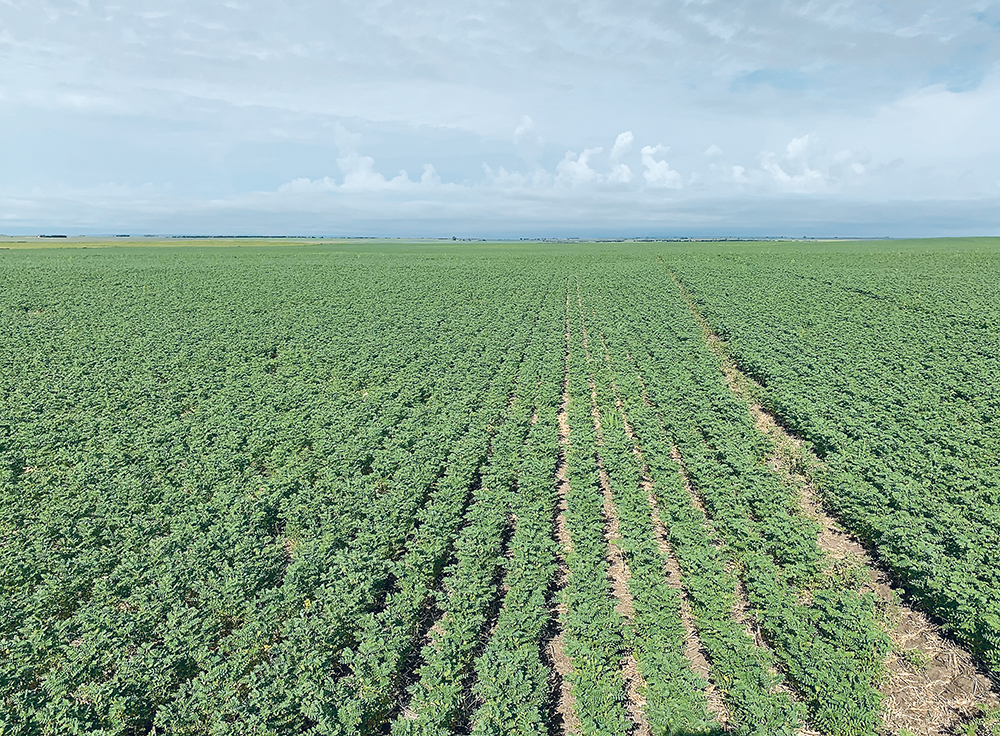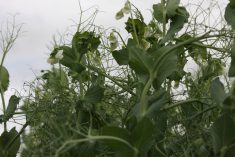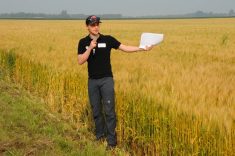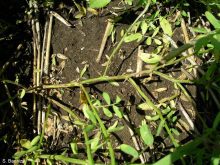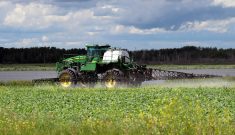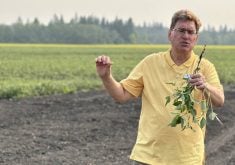During a year when pulse growers are facing everything from extremely dry conditions in southern Alberta to flooding in Manitoba, Tammy Jones keeps one thing in mind.
“I think that, like every year, there is no normal and that there are some challenging conditions regardless of where you go.”
As technical sales agronomist in Manitoba for Corteva Agriscience, Jones said moisture is a wild card Western Canadian farmers have learned to deal with when it comes to applying herbicides and fungicides on pulse crops.
Read Also

Crop quality looks good this year across Prairies
Crop quality looks real good this year, with the exception of durum.
“Flooding in Manitoba is not unusual. Dry conditions in southern Alberta are not unusual,” she explained. “That being said, we’ve seen the opposite to where it’s been dry in Manitoba and there has been more moisture in Alberta.”
As a result, most farmers are well educated about how to make good decisions for a wide range of growing conditions. One thing producers learn is that pulses have less tolerance of excess moisture than other crops.
“‘They don’t like wet feet,’ is what I used to say when we’re talking about beans or peas,” Jones said.
Peas in particular do better under drier conditions because they are more efficient at using water and there is less pressure from diseases. However, farmers must still control weeds to reduce competition for moisture and nutrients.
Wetter conditions bring their own set of problems. They can delay seeding, resulting in weeds getting out of hand and limiting stand establishment, Jones said.
Moisture also has an impact on fungal diseases that can harm pulses. Cooler, wetter conditions typically favour diseases such as ascochyta blight or anthracnose in crops such as lentils.
Besides keeping a close eye on the weather forecast, farmers need to be out in fields regularly scouting their crops before the worst effects of such diseases occur.
“So, in peas and lentils, that tends to be just prior to flowering that we start to scout,” Jones said. “And then we’re in the field frequently to make sure that we are assessing the potential for disease development and then providing that protective fungicide application prior to disease outbreak already being in the field and not being able to recover from that.”
Scouting is particularly important because the microclimate in a field can enhance how rapidly diseases develop. There are several checklists available through pulse grower organizations that can help farmers assess whether conditions are favourable for diseases.
Farmers also need to keep in mind there is a link between weed control and diseases pointing out that weeds can affect pulses by hastening occurrence of diseases.
“We know that we want to be proactive in our scouting, making sure that we are in there frequently to ensure that disease isn’t developing, and we’re utilizing fungicides in a timely and effective manner to protect that yield potential.”
Along with dry conditions, southern Alberta experienced prolonged cold temperatures this spring.
“Plant growth is typically a bit slower, so it adds stress to that plant,” Jones said. “The crop doesn’t establish as vigorously, so sometimes that does lead to more susceptibility to diseases and more competition from weeds.”
Crop genetics can also help farmers.
“There are some varieties that are better suited because they have higher levels of genetic resistance to certain diseases. There are lots of management decisions that need to be made and fungicide application is one key in preventing that disease development.”
Before they apply chemicals to pulses during dry conditions, farmers may need to ensure there is adequate growth and good crop potential so the crop isn’t harmed, Jones said.
“From what I have seen, the fungicides that are on the market are rarely negatively impacting on the health of the crop. In fact, there are a number of fungicides, including Acapela, which are known for their plant health benefits and helping keep those plants green.”
By contrast, certain herbicides can have an impact on crops that are already stressed, she said.
“But if we’re timing that herbicide application during that appropriate window… then we’re going to minimize the impact on the crop while maximizing the return on investment by eliminating those weeds that are competing for nutrients and moisture – and that are also problematic when it comes to that microclimate in that field and might actually be enhancing disease development.”
Jones said the benefits outweigh the disadvantages of going without weed control.
“So certainly, you want your crop to be as healthy as possible, but timing it for the appropriate growth stages of the crop is one key in ensuring that you’re minimizing any risk to the crop.”
During wetter conditions, it can be a challenge for farmers to get into the field to use herbicides, particularly for those products that are only registered for ground application, she said.
“There are herbicides that are registered for aerial application, too, and so sometimes that is something that we need to look at instead in order to make sure that we’re timing that herbicide for an appropriate timing.”
Since wet conditions can also delay seeding, one strategy is to do a pre-seed application to remove weeds before the crop is established. The goal is to prevent early germinating weeds from getting a head start.
“And by doing that, we’re reducing the pressure on getting back into that field as quickly because we’ve removed those weeds at the right stage and aren’t pushing it later on in crop,” Jones said. “From a fungicide perspective, typically those higher moisture conditions means that we’re going to see the disease develop more rapidly.”
As a result, it may mean more than one application of a fungicide may be needed for crops such as lentils to adequately manage diseases. Drier conditions across most of Western Canada in the last couple of years means farmers may not have seen as much disease development.
“In some areas this year, it looks like we are setting up for a more wet type of cycle. And so, in those areas where we have good growing conditions and adequate moisture, being able to manage diseases — with good genetics, cultural control methods, good weed control, and then scouting to make sure that we’re using fungicides in an effective manner — is really important.”
doug.ferguson@producer.com




